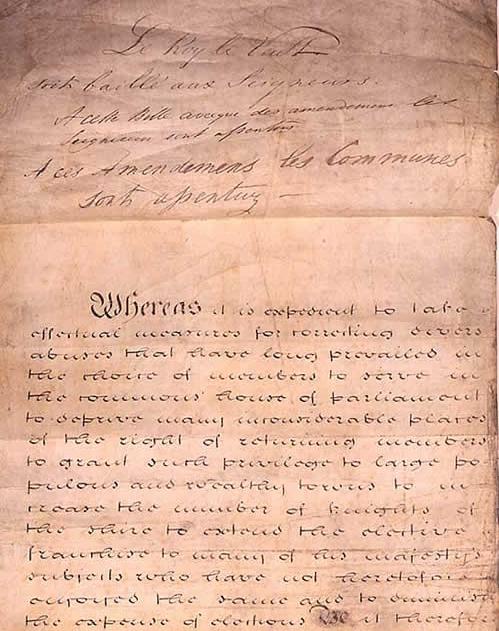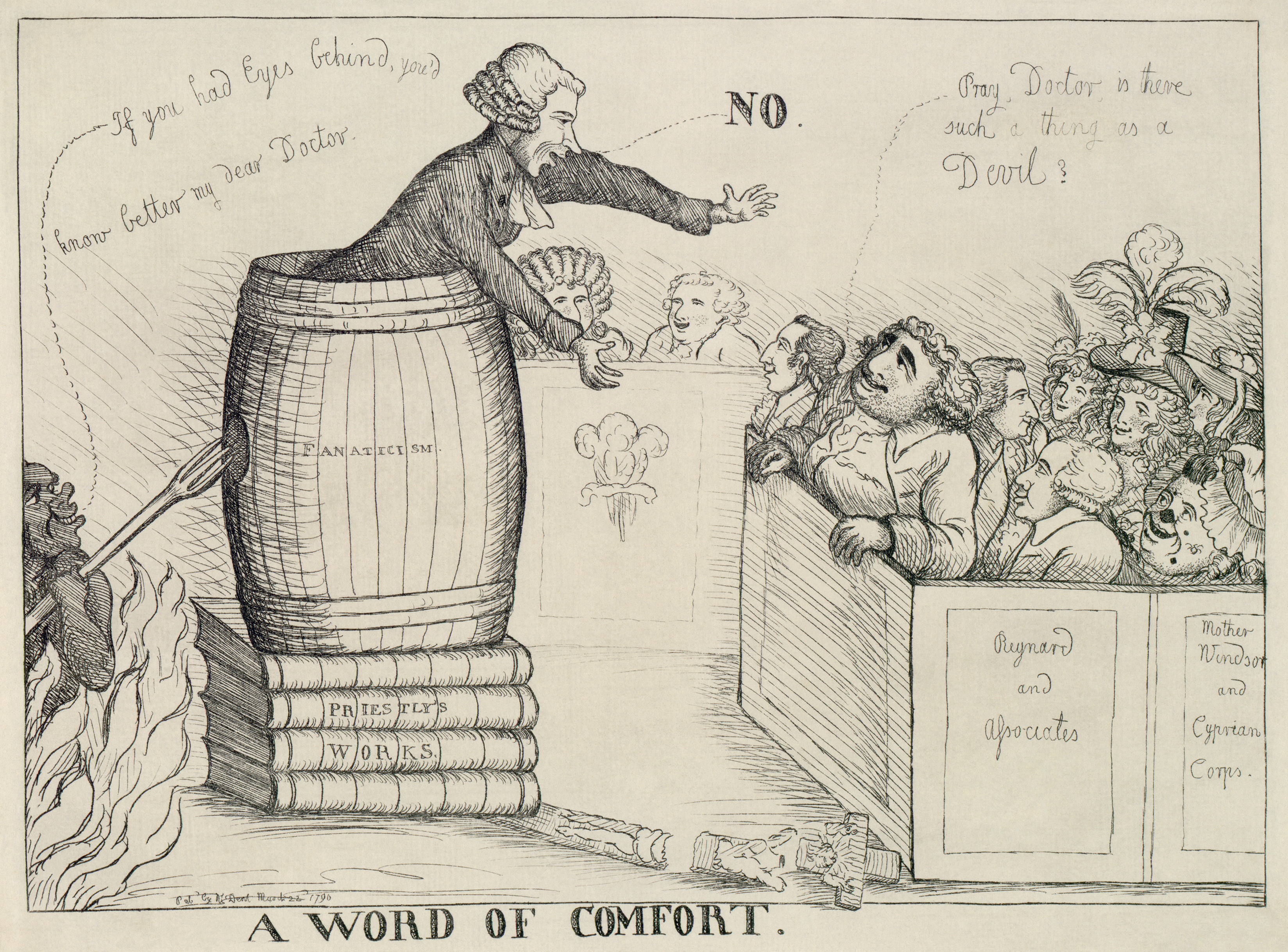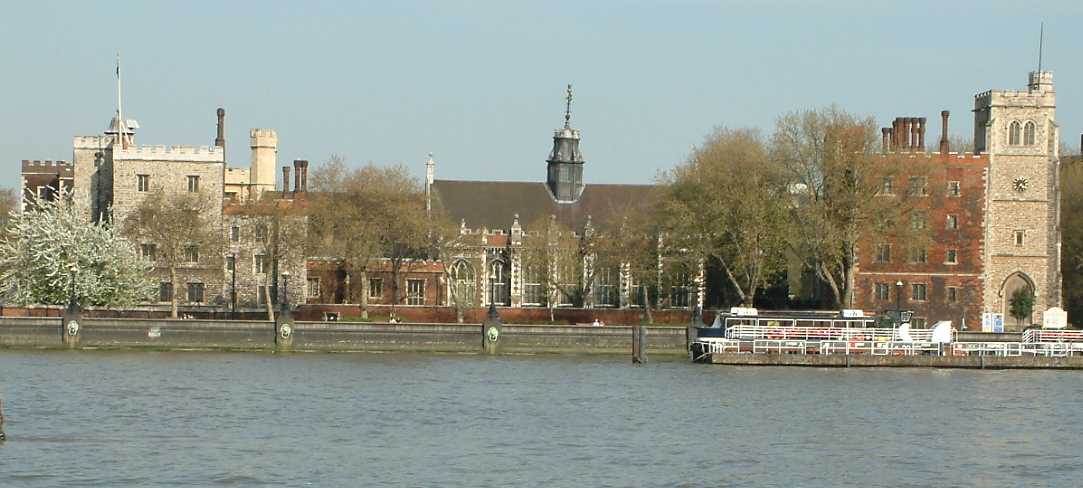|
Archbishop Howley
William Howley (12 February 1766 – 11 February 1848) was a clergyman in the Church of England. He served as Archbishop of Canterbury from 1828 to 1848. Early life, education, and interests Howley was born in 1766 at Ropley, Hampshire, where his father was vicar. He was educated at Winchester College and in 1783 went to New College, Oxford. He became Chaplain to the Marquess of Abercorn in 1792, whose influence was critical in advancing his early career. In 1809 he was appointed Regius Professor of Divinity at Oxford University (as well as previously becoming a Fellow of Winchester and a Canon of Christ Church, Oxford in 1804). He was an active English Freemason, having joined the 'Royal York Lodge' in Bristol on 21 December 1791, aged 25, and served the lodge regularly until around the turn of the century, including serving as Master of the Lodge. In October 1813, at Lambeth Palace, he was consecrated Bishop of London, a post he was to occupy until 1828, when he b ... [...More Info...] [...Related Items...] OR: [Wikipedia] [Google] [Baidu] |
William Owen (painter)
William Owen (1769-1825) was an English portrait painter known for his portraits of society figures such as Pitt the Younger and George, Prince of Wales (later King George IV). Early life William Owen was born at 13 Broad Street, Ludlow, Shropshire in 1769 and was baptised on 3 November in Ludlow Parish Church. Owen's father, Jeremiah Owen, had trained for the church but instead chose to follow in his father's profession and took over the family barber shop which he later expanded into a stationary and bookshop. Owen found his talent at a young age, and would frequently be found sketching the scenery of his surrounding area, his first identifiable work being a drawing of Ludlow Castle, which is thought to have been given to Margaret Maskelyne, Lady Clive (1735-1817). Career In 1786 Owen moved to London, where he was apprenticed to the coach painter Charles Cotton, RA (1728–1798).This position was most likely arranged by his uncle, who was butler to the scholar and art ... [...More Info...] [...Related Items...] OR: [Wikipedia] [Google] [Baidu] |
Freemason
Freemasonry or Masonry refers to fraternal organisations that trace their origins to the local guilds of stonemasons that, from the end of the 13th century, regulated the qualifications of stonemasons and their interaction with authorities and clients. Modern Freemasonry broadly consists of two main recognition groups: * Regular Freemasonry insists that a volume of scripture be open in a working lodge, that every member profess belief in a Supreme Being, that no women be admitted, and that the discussion of religion and politics be banned. * Continental Freemasonry consists of the jurisdictions that have removed some, or all, of these restrictions. The basic, local organisational unit of Freemasonry is the Lodge. These private Lodges are usually supervised at the regional level (usually coterminous with a state, province, or national border) by a Grand Lodge or Grand Orient. There is no international, worldwide Grand Lodge that supervises all of Freemasonry; each Grand Lod ... [...More Info...] [...Related Items...] OR: [Wikipedia] [Google] [Baidu] |
Tractarian
The Oxford Movement was a movement of high church members of the Church of England which began in the 1830s and eventually developed into Anglo-Catholicism. The movement, whose original devotees were mostly associated with the University of Oxford, argued for the reinstatement of some older Christian traditions of faith and their inclusion into Anglican liturgy and theology. They thought of Anglicanism as one of three branches of the " one, holy, catholic, and apostolic" Christian church. Many key participants subsequently converted to Roman Catholicism. The movement's philosophy was known as Tractarianism after its series of publications, the ''Tracts for the Times'', published from 1833 to 1841. Tractarians were also disparagingly referred to as "Newmanites" (before 1845) and "Puseyites" (after 1845) after two prominent Tractarians, John Henry Newman and Edward Bouverie Pusey. Other well-known Tractarians included John Keble, Charles Marriott, Richard Froude, Robert Wilbe ... [...More Info...] [...Related Items...] OR: [Wikipedia] [Google] [Baidu] |
Caroline Divines
The Caroline Divines were influential theologians and writers in the Church of England who lived during the reigns of King Charles I and, after the Restoration, King Charles II (Latin: Carolus). There is no official list of Caroline-era divines; they are defined by the era in which they lived, and Caroline Divines hailed from England, Ireland, Scotland, and Wales. However, of these four nations, it is Caroline England which is most commonly considered to have fostered a golden age of Anglican scholarship and devotional writing, despite the socio-cultural upset of civil war, regicide, and military rule under Oliver Cromwell. Importantly, the term divine is restricted neither to canonised saints nor to Anglican figures, but is used of many writers and thinkers in the wider Christian church. Theology and outlook The corpus produced by the Caroline divines is diverse. What they have in common is a commitment to the faith as conveyed by Scripture and the Book of Common Prayer, th ... [...More Info...] [...Related Items...] OR: [Wikipedia] [Google] [Baidu] |
High Church
The term ''high church'' refers to beliefs and practices of Christian ecclesiology, liturgy, and theology that emphasize formality and resistance to modernisation. Although used in connection with various Christian traditions, the term originated in and has been principally associated with the Anglican tradition, where it describes churches using a number of ritual practices associated in the popular mind with Roman Catholicism and Eastern Orthodoxy. The opposite tradition is '' low church''. Contemporary media discussing Anglican churches erroneously prefer the terms evangelical to ''low church'' and Anglo-Catholic to ''high church'', even though their meanings do not exactly correspond. Other contemporary denominations that contain high church wings include some Lutheran, Presbyterian, and Methodist churches. Variations Because of its history, the term ''high church'' also refers to aspects of Anglicanism quite distinct from the Oxford Movement or Anglo-Catholicism. There rema ... [...More Info...] [...Related Items...] OR: [Wikipedia] [Google] [Baidu] |
The Times
''The Times'' is a British daily national newspaper based in London. It began in 1785 under the title ''The Daily Universal Register'', adopting its current name on 1 January 1788. ''The Times'' and its sister paper ''The Sunday Times'' (founded in 1821) are published by Times Newspapers, since 1981 a subsidiary of News UK, in turn wholly owned by News Corp. ''The Times'' and ''The Sunday Times'', which do not share editorial staff, were founded independently and have only had common ownership since 1966. In general, the political position of ''The Times'' is considered to be centre-right. ''The Times'' is the first newspaper to have borne that name, lending it to numerous other papers around the world, such as ''The Times of India'', ''The New York Times'', and more recently, digital-first publications such as TheTimesBlog.com (Since 2017). In countries where these other titles are popular, the newspaper is often referred to as , or as , although the newspaper is of nationa ... [...More Info...] [...Related Items...] OR: [Wikipedia] [Google] [Baidu] |
Reform Act 1832
The Representation of the People Act 1832 (also known as the 1832 Reform Act, Great Reform Act or First Reform Act) was an Act of Parliament, Act of Parliament of the United Kingdom (indexed as 2 & 3 Will. IV c. 45) that introduced major changes to the Voting system, electoral system of England and Wales. It abolished tiny Electoral district, districts, gave representation to cities, gave the vote to small landowners, tenant farmers, shopkeepers, householders who paid a yearly rental of £10 or more, and some lodgers. Only qualifying men were Suffrage, able to vote; the Act introduced the first explicit statutory bar to Women's suffrage, women voting by defining a voter as a male person. It was designed to correct abuses – to "take effectual Measures for correcting divers Abuses that have long prevailed in the Choice of Members to serve in the British House of Commons, Commons House of Parliament". Before the reform, most members nominally represented boroughs. The number of ... [...More Info...] [...Related Items...] OR: [Wikipedia] [Google] [Baidu] |
Catholic Relief Act 1829
The Catholic Relief Act 1829, also known as the Catholic Emancipation Act 1829, was passed by the Parliament of the United Kingdom in 1829. It was the culmination of the process of Catholic emancipation throughout the United Kingdom of Great Britain and Ireland. In Ireland, it repealed the Test Act 1672 and the remaining Penal Laws which had been in force since the passing of the Disenfranchising Act of the Irish Parliament of 1728. Its passage followed a vigorous campaign led by Irish lawyer Daniel O'Connell that threatened insurrection. The British prime minister, the Duke of Wellington, and the home secretary, Robert Peel, although initially opposed, accepted the need for it to avoid civil strife. The act permitted members of the Catholic Church to sit in the parliament at Westminster. O'Connell had won a seat in a by-election for Clare in 1828 against an Anglican. Under the extant penal law, O'Connell, as a Catholic, was forbidden to take his seat in Parliament. Peel ... [...More Info...] [...Related Items...] OR: [Wikipedia] [Google] [Baidu] |
Test And Corporation Acts
The Test Acts were a series of English penal laws that served as a religious test for public office and imposed various civil disabilities on Roman Catholics and nonconformists. The underlying principle was that only people taking communion in the established Church of England were eligible for public employment, and the severe penalties pronounced against recusants, whether Catholic or nonconformist, were affirmations of this principle. Similar laws were introduced in Scotland with respect to the Presbyterian Church of Scotland. In practice nonconformists were often exempted from some of these laws through the regular passage of Acts of Indemnity: in particular, the Indemnity Act 1727 relieved Nonconformists from the requirements in the Test Act 1673 and the Corporation Act 1661 that public office holders must have taken the sacrament of the Lord's Supper in an Anglican church. Except at Oxbridge, where nonconformists and Catholics could not matriculate (Oxford) or graduate (Ca ... [...More Info...] [...Related Items...] OR: [Wikipedia] [Google] [Baidu] |
William Howley, Bishop Of London (1766-1848) By Francis Leggatt Chantrey
William is a masculine given name of Norman French origin.Hanks, Hardcastle and Hodges, ''Oxford Dictionary of First Names'', Oxford University Press, 2nd edition, , p. 276. It became very popular in the English language after the Norman conquest of England in 1066,All Things William"Meaning & Origin of the Name"/ref> and remained so throughout the Middle Ages and into the modern era. It is sometimes abbreviated "Wm." Shortened familiar versions in English include Will, Wills, Willy, Willie, Liam, Bill, and Billy. A common Irish form is Liam. Scottish diminutives include Wull, Willie or Wullie (as in Oor Wullie or the play ''Douglas''). Female forms are Willa, Willemina, Wilma and Wilhelmina. Etymology William is related to the German given name ''Wilhelm''. Both ultimately descend from Proto-Germanic ''*Wiljahelmaz'', with a direct cognate also in the Old Norse name ''Vilhjalmr'' and a West Germanic borrowing into Medieval Latin ''Willelmus''. The Proto-Germanic name is a ... [...More Info...] [...Related Items...] OR: [Wikipedia] [Google] [Baidu] |
Bishop Of London
A bishop is an ordained clergy member who is entrusted with a position of authority and oversight in a religious institution. In Christianity, bishops are normally responsible for the governance of dioceses. The role or office of bishop is called episcopacy. Organizationally, several Christian denominations utilize ecclesiastical structures that call for the position of bishops, while other denominations have dispensed with this office, seeing it as a symbol of power. Bishops have also exercised political authority. Traditionally, bishops claim apostolic succession, a direct historical lineage dating back to the original Twelve Apostles or Saint Paul. The bishops are by doctrine understood as those who possess the full priesthood given by Jesus Christ, and therefore may ordain other clergy, including other bishops. A person ordained as a deacon, priest (i.e. presbyter), and then bishop is understood to hold the fullness of the ministerial priesthood, given responsibility b ... [...More Info...] [...Related Items...] OR: [Wikipedia] [Google] [Baidu] |
Lambeth Palace
Lambeth Palace is the official London residence of the Archbishop of Canterbury. It is situated in north Lambeth, London, on the south bank of the River Thames, south-east of the Palace of Westminster, which houses Parliament, on the opposite bank. History While the original residence of the Archbishop of Canterbury was in his episcopal see, Canterbury, Kent, a site originally called the Manor of Lambeth or Lambeth House was acquired by the diocese around AD 1200 and has since served as the archbishop's London residence. The site is bounded by Lambeth Palace Road to the west and Lambeth Road to the south, but unlike all surrounding land is excluded from the parish of North Lambeth. The garden park is listed and resembles Archbishop's Park, a neighbouring public park; however, it was a larger area with a notable orchard until the early 19th century. The former church in front of its entrance has been converted to the Garden Museum. The south bank of the Thames along this re ... [...More Info...] [...Related Items...] OR: [Wikipedia] [Google] [Baidu] |


.jpg)




